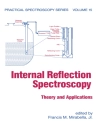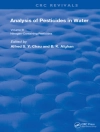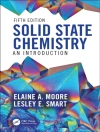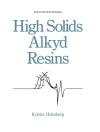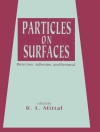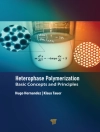The importance of emulsification techniques, their use in the production of nanoparticles for biomedical applications as well as application of rheological techniques for studying the interaction between the emulsion droplets is gathered in this reference work.
Written by some of the top scientists within their respective fields, this book covers such topics as emulsions, nano-emulsions, nano-dispersions and novel techniques for their investigation. It also considers the fundamental approach in areas such as controlled release, drug delivery and various applications of nanotechnology.
Mục lục
PREFACE
EMULSION FORMATION, STABILITY, AND RHEOLOGY
Introduction
Industrial Applications of Emulsions
Physical Chemistry of Emulsion Systems
Thermodynamics of Emulsion Formation and Breakdown
Interaction Energies (Forces) between Emulsion Droplets and Their Combinations
Adsorption of Surfactants at the Liquid/Liquid Interface
Selection of Emulsifiers
Creaming or Sedimentation of Emulsions
Flocculation of Emulsions
Ostwald Ripening
Emulsion Coalescence
Rheology of Emulsions
Bulk Rheology of Emulsions
Viscoelastic Properties of Concentrated Emulsions
EMULSION FORMATION IN MEMBRANE AND MICROFLUIDIC DEVICES
Introduction
Membrane Emulsification (ME)
Microfluidic Junctions and Flow-Focusing Devices
Microfluidic Devices with Parallel Microchannel Arrays
Glass Capillary Microfluidic Devices
Application of Droplets Formed in Membrane and Microfluidic Devices
Conclusions
ADSORPTION CHARACTERISTICS OF IONIC SURFACTANTS AT WATER/HEXANE INTERFACE OBTAINED BY PAT AND ODBA
Introduction
Experimental Tools
Theory
Results
Summary
MEASUREMENT TECHNIQUES APPLICABLE TO THE INVESTIGATION OF EMULSION FORMATION DURING PROCESSING
Introduction
Online Droplet Size Measurement Techniques
Techniques Investigating Droplet Coalescence
Concluding Remarks
EMULSIFICATION IN ROTOR –
STATOR MIXERS
Introduction
Classification and Applications of Rotor –
Stator Mixers
Engineering Description of Emulsification/Dispersion Processes
Advanced Analysis of Emulsification/Dispersion Processes in Rotor –
Stator Mixers
Conclusion
FORMULATION, CHARACTERIZATION, AND PROPERTY CONTROL OF PARAFFIN EMULSIONS
Introduction
Surfactant Systems Used in Formulation of Paraffin Emulsions
Formation and Characterization of Paraffin Emulsions
Control of Particle Size
Stability of Paraffin Emulsions
Conclusions
POLYMERIC O/W NANO-EMULSIONS OBTAINED BY THE PHASE INVERSION COMPOSITION (PIC) METHOD FOR BIOMEDICAL NANOPARTICLE PREPARATION
Introduction
Phase Inversion Emulsification Methods
Aspects on the Choice of the Components
Ethylcellulose Nano-Emulsions for Nanoparticle Preparation
Final Remarks
RHEOLOGY AND STABILITY OF STERICALLY STABILIZED EMULSIONS
Introduction
General Classification of Polymeric Surfactants
Interaction between Droplets Containing Adsorbed Polymeric Surfactant Layers: Steric Stabilization
Emulsions Stabilized by Polymeric Surfactants
Principles of Rheological Techniques
Rheology of Oil-in-Water (O/W) Emulsions Stabilized with Poly(Vinyl Alcohol)
INDEX
Giới thiệu về tác giả
After finishing his Ph D at Alexandria University, Tharwat Tadros was appointed lecturer in Physical Chemistry (1962-1966) at the same University. Between 1966 and 1969, he spent a sabbatical at the Agricultural University of Wageningen and T.N.O in Delft, the Netherlands. Thereafter he worked at I.C.I. and ZENECA until 1994, where he researched various fields of surfactants, emulsions, suspensions, microemulsions, wetting spreading and adhesion, and rheology. During that period he was also appointed visiting professor at Imperial College London, Bristol University and Reading University. In 1992, he was elected President of the International Association of Colloid and Interface Science. Since leaving ZENECA, Dr Tadros has worked as a consultant for various industries and also given several courses in his specialized field. He is the recipient of two medals from the Royal Society of Chemistry in the UK, and has more than 250 scientific papers to his name.



